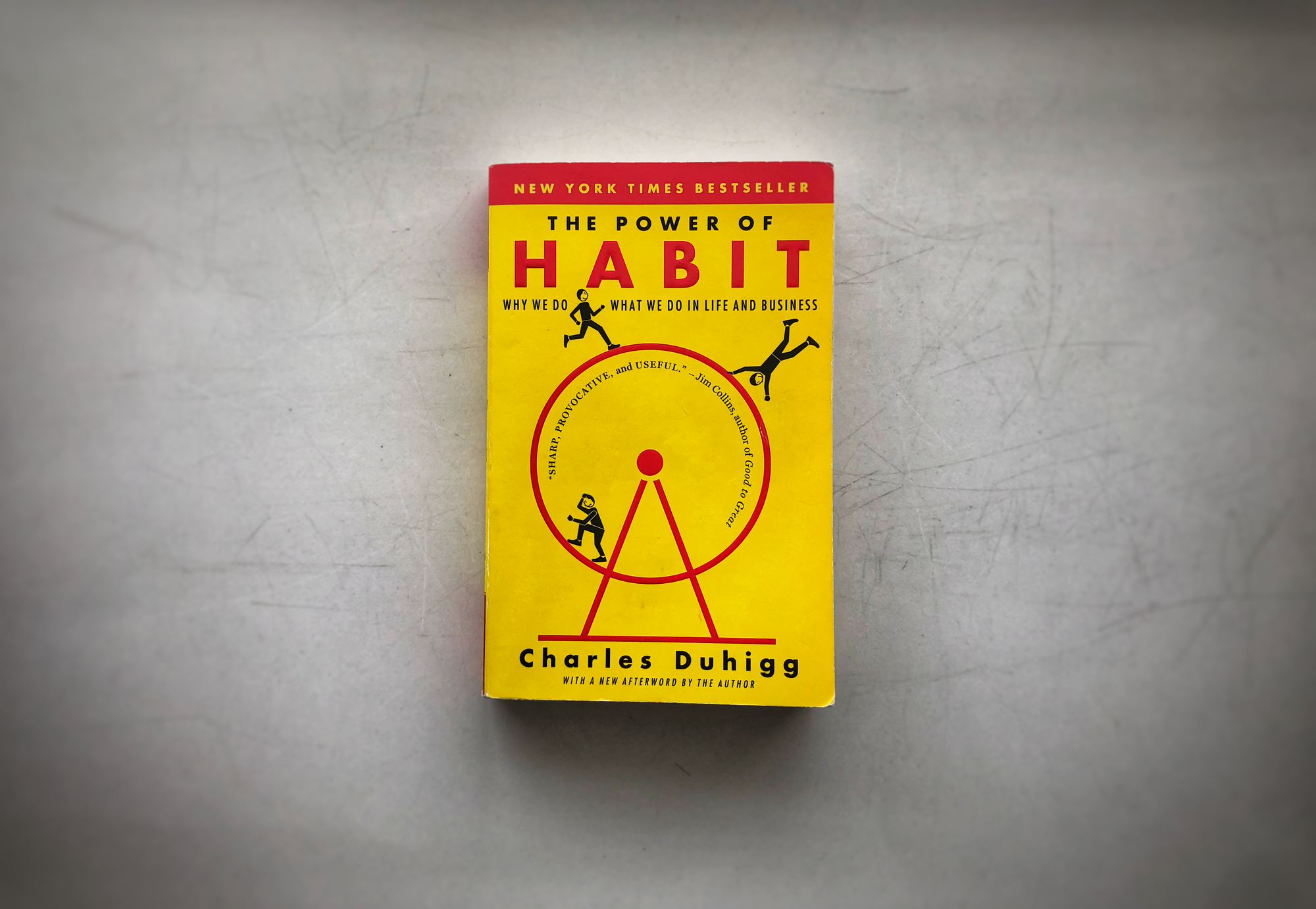
The book in 1 minute
- The choices we make in our daily lives can be explained through several habit loops
- Habits can be broken down into a cycle of Cue, Routine, and Reward
- The cue is a trigger, a sub-conscious craving of the reward which actions us
- The routine is the habit, the set of actions we perform
- The reward is the emotional, physical, and/or mental benefits
- Understanding the structure of habits can encourage us to find new behaviors and create the habit loops we want
- Good and bad habits are created when our brain stops being fully engaged in the choices we make
- When we deeply analyze the environment where our habits reside, we can start to see a pattern emerging
- To create a new habit, we need to
a) find a simple and obvious cue, and
b) clearly define the rewards
Summary
The reason why habits are so powerful is because we start to anticipate the rewards and develop a response within our body to crave them. The routines we develop are what makes it hard to break our habits as the patterns reside in our heads. It’s much easier to follow the same pattern because of the comfort and familiarity that our minds have associated with these practices. An automatic script runs in our brain when we see or feel a certain way and perform the habit loop without realizing ourselves. One thing to note is that habit loops are not bad, because if we had to consciously make every choice in our lives, our minds would be overloaded and fatigued, leaving no room for important decision making.
The problem we encounter is when we have habit loops that we have identified are bad, where our subconscious mind makes the decisions for us and satisfies a craving before we can stop it. Thankfully, by deliberately creating new neurological routines, we can start to control our actions by forcefully putting the bad tendencies on hold. To change a habit, we need to:
- Understand what initiates a certain routine; All cues can be fit into at least one of these categories:
- Location
- Time
- Emotional State
- Other People
- Immediately preceding action (what kind of urges)
- Understand the routine (habit itself)
- What do you do?
- Clearly understand the reward
- What exactly is the reward I’m looking for? Is it a feeling of satisfaction? Is it a dopamine hit?
Sometimes, we misunderstand our habits. Take, for instance, breaking the habit of getting a snack at work. Every day at around 3 pm, I get up and go to the cafeteria to purchase a cookie and socialize with coworkers. By dissecting the habit into cue, routine, and rewards, the reward may not be satisfying the cookie craving, but rather the social interactions with your coworkers. Once we identify that, we can change our routine to get the same reward. Instead of walking to the cafeteria, I can walk to a coworkers’ desk to satisfy the same craving. Of course, we beg to ask the question: What if the sugar treat of a cookie is what we desire? Then we would have to create new behaviors within our routine. A new routine could be that instead of going to the cafeteria, we could pack a fruit and eat it once we get the cue around 3 pm.
When we start to understand what our rewards really are, we may realize that we can change the routine. The book does not tell you what habits to break or form, that decision is up to you. But after we have an objective, we can put this theory to the test.
Creating new habits:
- Find a simple and obvious cue
- Ex. If we want to start exercising in the morning, simply having our workout clothing next to the bed can initiate the habit loop.
- Clearly define the rewards
- Ex. A small snack after the exercise. It has to be something that you want. For me, that hot cup of coffee in the morning after exercising is my reward.
Once we start exercising, our brain starts craving the endorphins or sense of accomplishment even before exercising.
After we understand the habit cycle, it’s time to create an implementation plan for ourselves. We can start by shifting our behaviors when faced with the cues we’ve identified. By consciously choosing new actions to support a better routine, we can develop the right habits or change existing ones to suit our desire. Forming habits is an experimentation process with the right rewards or routines to reengineer the existing formula within ourselves.
